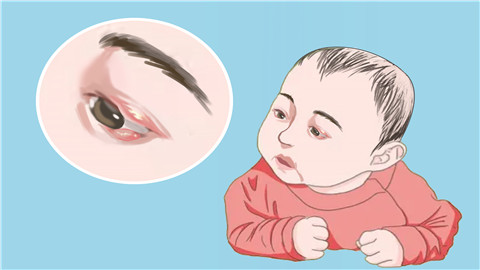What are the causes of tearing in newborns?
Generally, the main causes of tearing in newborns include underdeveloped lacrimal glands, sensitive periorbital skin irritation, inverted eyelashes, neonatal dacryocystitis, and conjunctivitis. If discomfort symptoms occur, it is recommended to seek timely diagnosis and treatment at a regular hospital. Detailed analysis is as follows:
1. Underdeveloped Lacrimal Glands
The lacrimal function in newborns has not fully matured, and the balance between tear secretion and drainage remains unstable, occasionally resulting in spontaneous tearing. This phenomenon will gradually disappear as the infant grows and develops. It is important to maintain eye hygiene by gently wiping the eye area with clean gauze soaked in warm boiled water.
2. Sensitive Periorbital Skin Irritation
Newborns have delicate periorbital skin that may react to dust, sweat, or irritating skincare products, causing localized discomfort and tearing. It is important to maintain indoor cleanliness, avoid exposing the infant to allergenic substances, clean the periorbital skin with warm water, and use mild baby-specific skincare products.

3. Inverted Eyelashes
Due to incomplete eyelid development, newborns may experience eyelashes growing inward toward the eyeball, continuously irritating the cornea and conjunctiva, leading to frequent tearing. Mild symptoms can be improved through eyelid massage; if the inverted eyelashes are severe and persistent, eyelid surgery for correction may be performed after medical evaluation to adjust the growth direction of the eyelashes.
4. Neonatal Dacryocystitis
In newborns, the embryonic membrane at the lower end of the nasolacrimal duct may not regress properly, causing obstruction of the tear duct and tear retention that can lead to infection. Symptoms include tearing and increased ocular discharge. Under medical guidance, lacrimal sac massage can be performed by gently pressing along the inner corner of the eye toward the nasal bridge to help rupture the membrane. If infection occurs, anti-infective medications such as tobramycin eye drops, levofloxacin eye drops, or erythromycin ointment may be used.
5. Conjunctivitis
When a newborn's eyes are affected by bacterial or viral infection, conjunctivitis may develop, causing conjunctival congestion, swelling, and increased tear secretion, resulting in tearing. Ocular discharge is often yellowish and purulent. For bacterial infection, medications such as chloramphenicol eye drops, fusidic acid eye drops, or mupirocin ointment may be prescribed under medical guidance. For viral infections, antiviral medications such as acyclovir eye drops or ganciclovir ophthalmic gel may be required.
In daily life, attention should be paid to maintaining the eye hygiene of newborns, avoiding rubbing the eyes with hands; washing hands before touching the infant to prevent cross-infection; and regularly checking the eyes. If tearing is accompanied by symptoms such as redness, swelling, or abnormal discharge, prompt medical attention should be sought.




